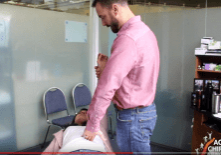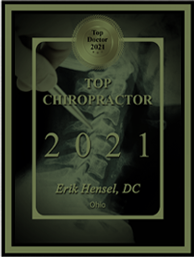A lot of our patients come into the office with the symptoms of hiatal hernia, but have no clue that they are suffering from this condition. The severity of this condition can be wide ranging, from very mild to clinically diagnosed and scoped. Some reasons that people suffer from hiatal hernia are: infections from yeast, bacteria, and parasites; physical, chemical, and emotional stresses; and food sensitivities, allergies, or intolerances. A lot of these triggers can go unnoticed or unanalyzed by our patients, but they all get tremendous relief from our treatment to correct the hiatal hernia. Some symptoms that patients experience relief with are: gassy/bloaty, heartburn & indegestion, and feeling too full after eating.
HOW WE CHECK & ADJUST FOR HIATAL HERNIA
The first step we take to check for hiatal hernia is to use applied kinesiology to check the stomach for a response. This is done by using the patient’s arm as a gauge to see if there is a muscular or neurological block in the stomach. Pictured here is our Dr. Hensel challenging the stomach up the body and pulling down on the arm (towards the feet of the patient) in order to see if the arm stays strong or if the arm breaks. If the arm stays strong, there is no neurological sign of hiatal hernia. In this case, the arm breaks down to the feet which gives Dr. Hensel an idea that there may be some hiatal hernia present in our patient (Dr. Monisha Mallik). To confirm this finding, Dr. Hensel pulls down on the stomach, which mimics a corrected stomach, and then tests the arm again. If the arm stays strong this time, this is an indication that performing the hiatal hernia adjustment will correct the stomach placement, and will give the patient relief from symptoms they were being challenged with.
To adjust for hiatal hernia, the process starts with the patient taking a couple deep breaths in and out. Once the patient is relaxed and ready, the doctor will place his fingers over the stomach on the inhale of the patient. This is easily managed because both the diaphragm and stomach move down on the inhale. Once Dr. Hensel’s fingers are around the stomach (he phrases the stomach feeling like a water balloon), the patient exhales and Dr. Hensel gently thrusts the stomach down (towards the feet) in order to correct the placement of the stomach. The hiatal hernia adjustment, with dietary and supplemental changes, can have profound effects on relieving some common symptoms seen in our patients, such as but not limited to indigestion, heartburn, acid reflux, and gerd.
Any questions? Direct them to our social media accounts!
Youtube | Facebook | Instagram
(614) 407-5335















